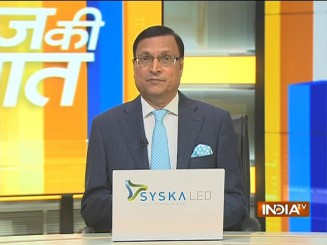 With the ‘hijab’ controversy spreading to nearly 50 schools across Karnataka, the issue is now being misused by vested interests abroad to project India in a bad light.
With the ‘hijab’ controversy spreading to nearly 50 schools across Karnataka, the issue is now being misused by vested interests abroad to project India in a bad light.
The latest example is that of the Organisation of Islamic Conference (OIC), whose general secretariat expressed deep concern over, what it called, “banning of Muslim girl students from wearing hijab in the state of Karnataka”. The OIC statement also says, “The continued attacks targeting Muslims … are indicative of the growing trend of Islamophobia’.
On Tuesday, India reacted strongly to the OIC statement. The Ministry of External Affairs spokesperson said, “India believes the OIC is allowing itself to be manipulated by Pakistan on issues related to Jammu and Kashmir and the alleged threat to Muslims in India….We have noted yet another motivated and misleading statement from the general secretariat of the OIC on matters pertaining to India.”
The MEA spokesperson said, “Issues in India are considered and resolved in accordance with our constitutional framework and mechanisms…democratic ethos and polity…The communal mindset of the OIC secretariat does not allow for a proper appreciation of these realities. The OIC continues to be hijacked by vested interests to further their nefarious propaganda against India. As a result, it has only harmed its own reputation.”
At a time when anti-Indian groups are trying to misuse the ‘hijab’ issue and give it a communal twist at international forums, the situation in Karnataka is worrying. On Tuesday, in as many as 50 schools of Karnataka, in Chickmagalur, Tumakuru, Kodagu, Mandya, Kalaburgi and Udupi, parents of Muslim girl students insisted on their wards wearing ‘hijab’ inside classrooms, but the administration did not allow them citing the interim order of Karnataka High Court, where the hearing continued for the third day on Wednesday.
Slogans of ‘Allahu Akbar’ were chanted by some parents, and in most of the cases, Muslim parents refused to allow their wards to enter classrooms without ‘hijab’. The parents went to the extent of asking their children to avoid taking preparatory examinations without ‘hijab’.
At the Mudigere Urdu School in Chickmagalur, 35 Muslim girls were allowed to sit in a separate classroom, but when the teachers asked them to remove ‘hijab’, they refused. When the teachers persuaded them to concentrate on their exams, the girl students protested, entered into arguments and then left the school. Their parents waiting outside had altercation with the school teachers and police, who pointed out that they had to implement the interim order of the High Court.
In Ghousia School in Mandya, a Muslim girl student insisted on wearing ‘hijab’ inside classroom, but when she was refused permission, she left the school. Her parents took her away. At the Govt Composite Urdu School in Kapu, Udupi district, some Muslim girl students insisted on giving exam while hearing ‘hijab’, but were disallowed. Their parents joined the argument, and the local tahasildar came to persuade the Muslim parents. The school authorities allowed 29 Muslim girl students to sit in a separate classroom and give exam without hijab, but eight of them, refused and went back with their parents.
At the Govt Urdu School in Kalaburgi, not a single Muslim girl student came to attend classes, as their parents insisted on the girls wearing ‘hijab’. Twenty Muslim girl students went back home. Similarly, in Karntaka Public School in Kodagu, twenty Muslim girls left for their homes from the school gates, after they were disallowed from hearing ‘hijab’. The students were supposed to sit for the pre-Board exams. Similar incident took place in Govt Girls Higher Secondary School in Shivmogga.
During the marathon hearing on ‘hijab’ issue before a three-judge bench in Karnataka High Court on Tuesday, advocate for two Muslim girl students, Devadatt Kamat argued that the state cannot bar Muslim girls from wearing ‘hijab’ citing ‘public order’. In his arguments, Kamat said, wearing of ‘hijab’ is an innocuous practice and cannot be termed as display of religious identity. He said, Article 25 of the Constitution gives freedom of practice and propagation of religion to every Indian, and the state cannot curb the same through a circular citing ‘public order’. “Even lawyers and judges wear certain ‘nama’ and this is not a display of religious identity. It is a practice of faith”, he said.
The advocate’s stress was more on withdrawal of the interim order barring wearing of religious dresses in schools and colleges. This includes both ‘hijab’ and ‘saffron shawls’. Since ‘hijab’ has been prohibited, the groups of boys who were wearing ‘saffron shawls’ have now disappeared. These boys were doing it as a reaction to Muslim girls wearing ‘hijab’.
The matter is now no more confined to educational institutions, because Muslim outfits like SDPI (Social Democratic Party of India) and PFI (People’s Front of India) have entered the scene. It has now become a case of one upmanship. But the ultimate losers are Muslim girls, who want to study, and who have been preparing for their board exams. These students are being prevented by their parents and CFI(Campus Front of India), the student organization of PFI. Muslim girls, studying in schools and colleges, are now caught in a web of communal politics and show of might.
Some elderly Muslim women have been heard saying why these girls are being prevented from wearing ‘hijab’. But we are also seeing videos of Muslim girls in the age group of eight to ten years, being brought to schools, wearing ‘hijab’. Can we say these young Muslim kids are exercising their personal choice? Or, has the veil been forced on them? These questions are bound to be raised. I personally believe that this entire issue must remain confined to wearing of school uniform, and everybody should wait for the court to give its verdict.